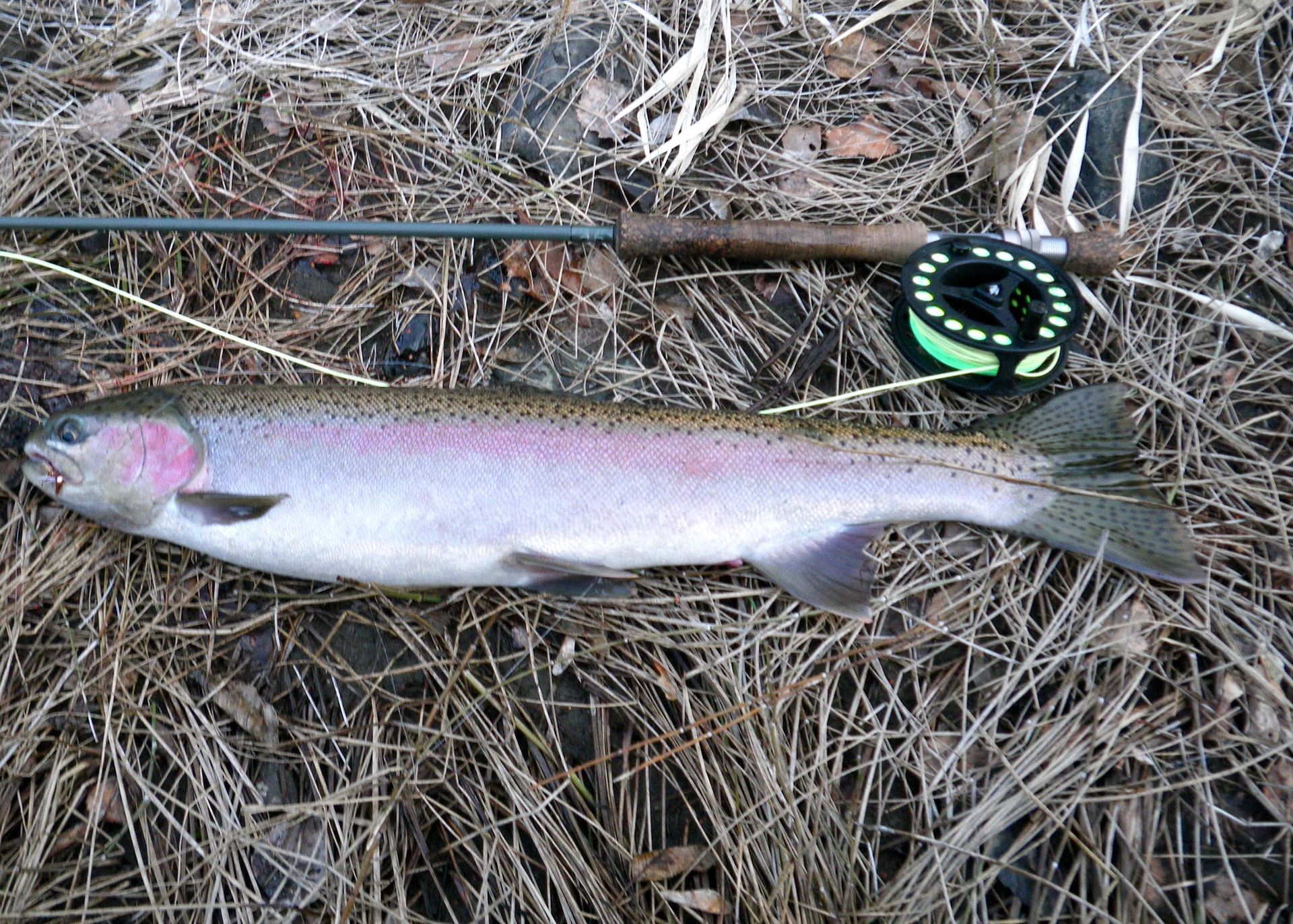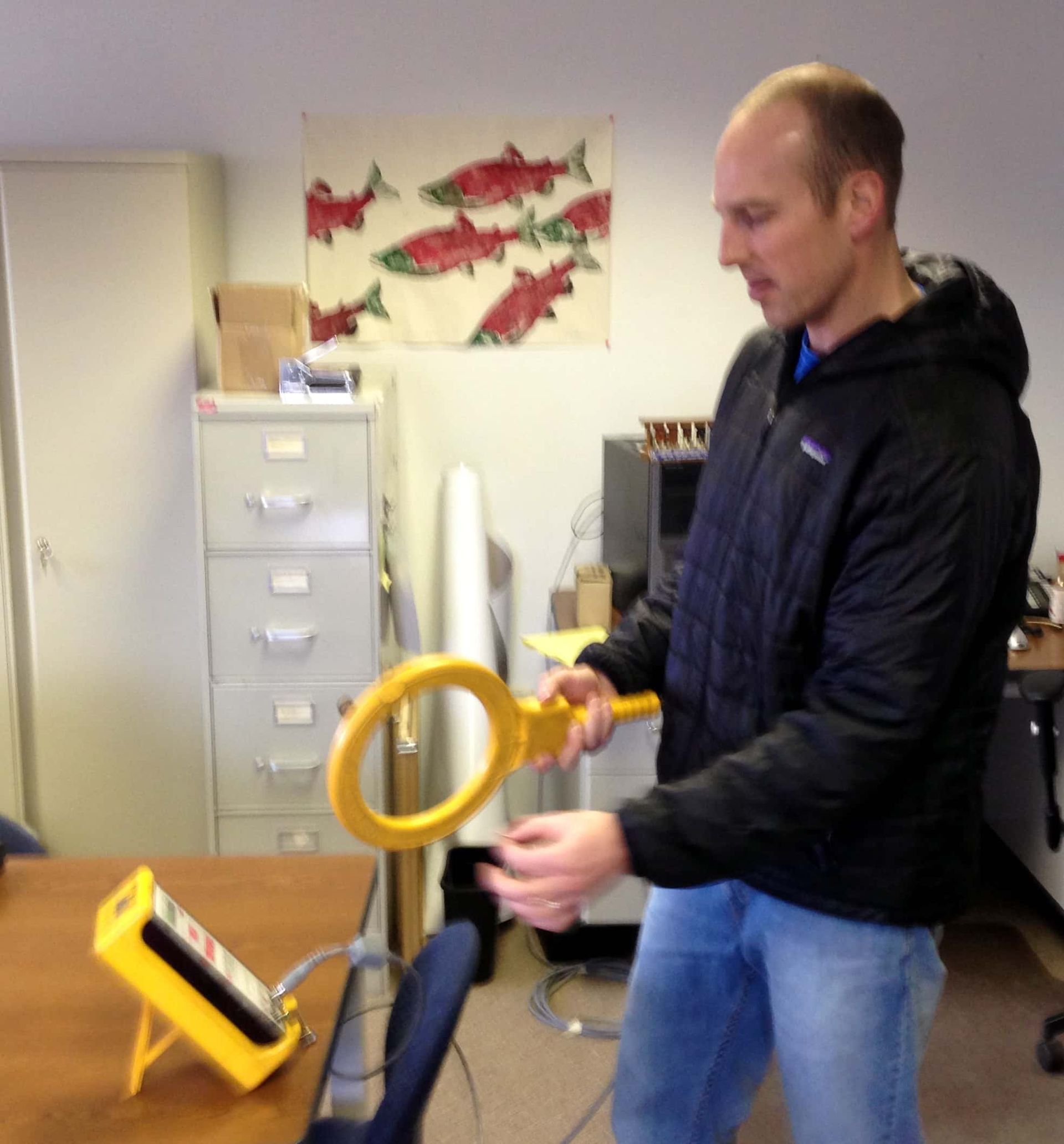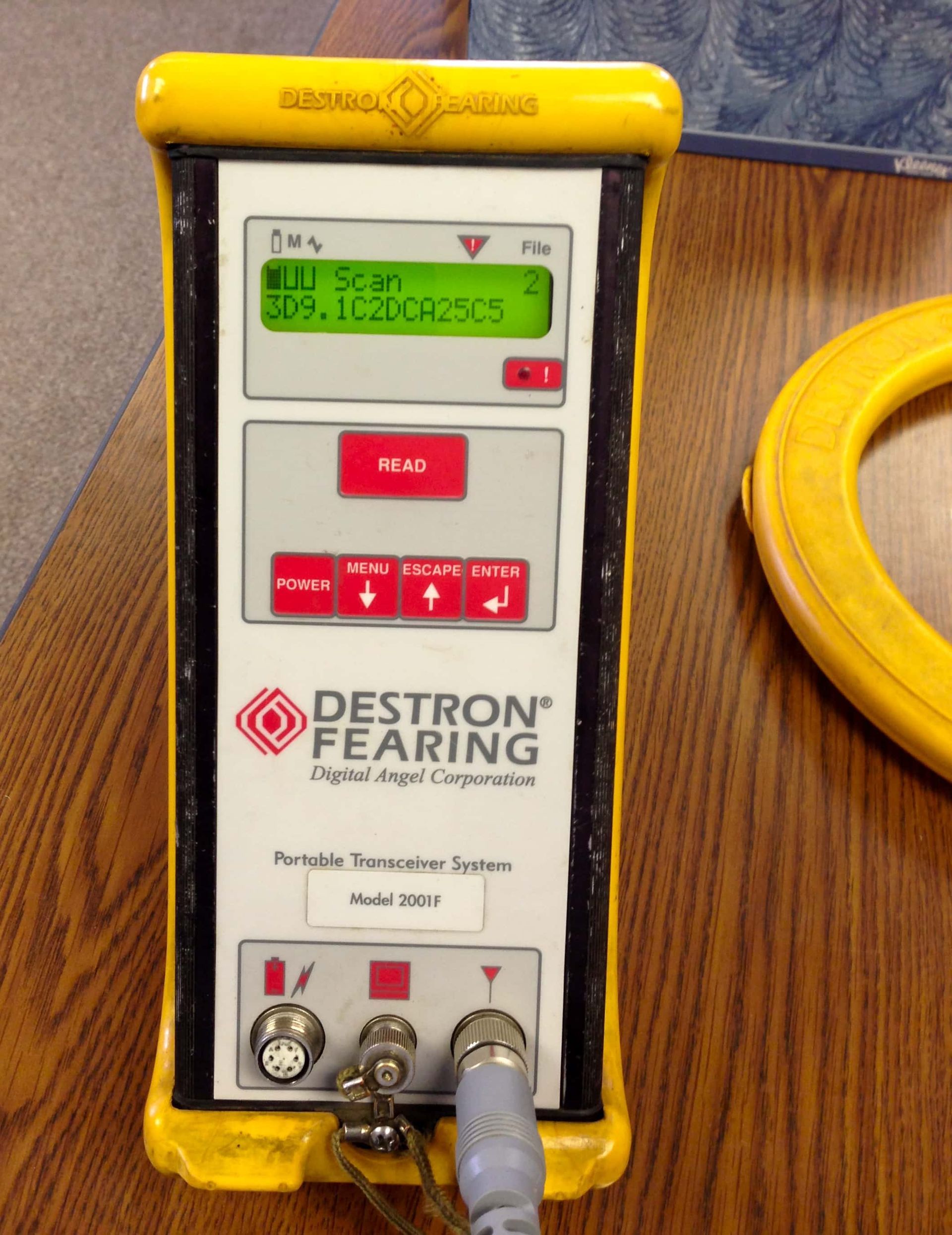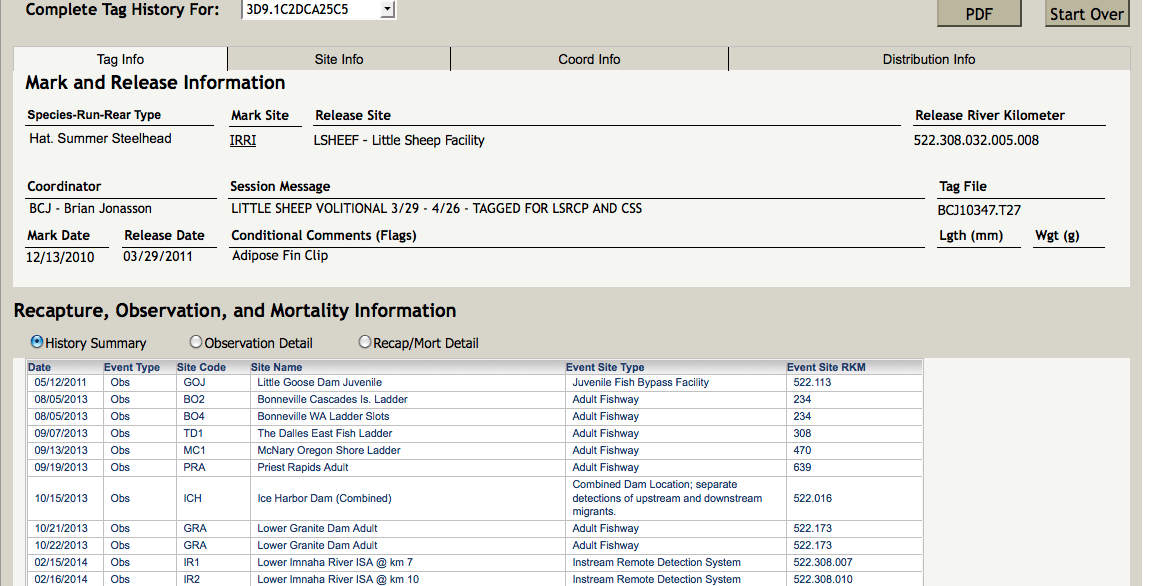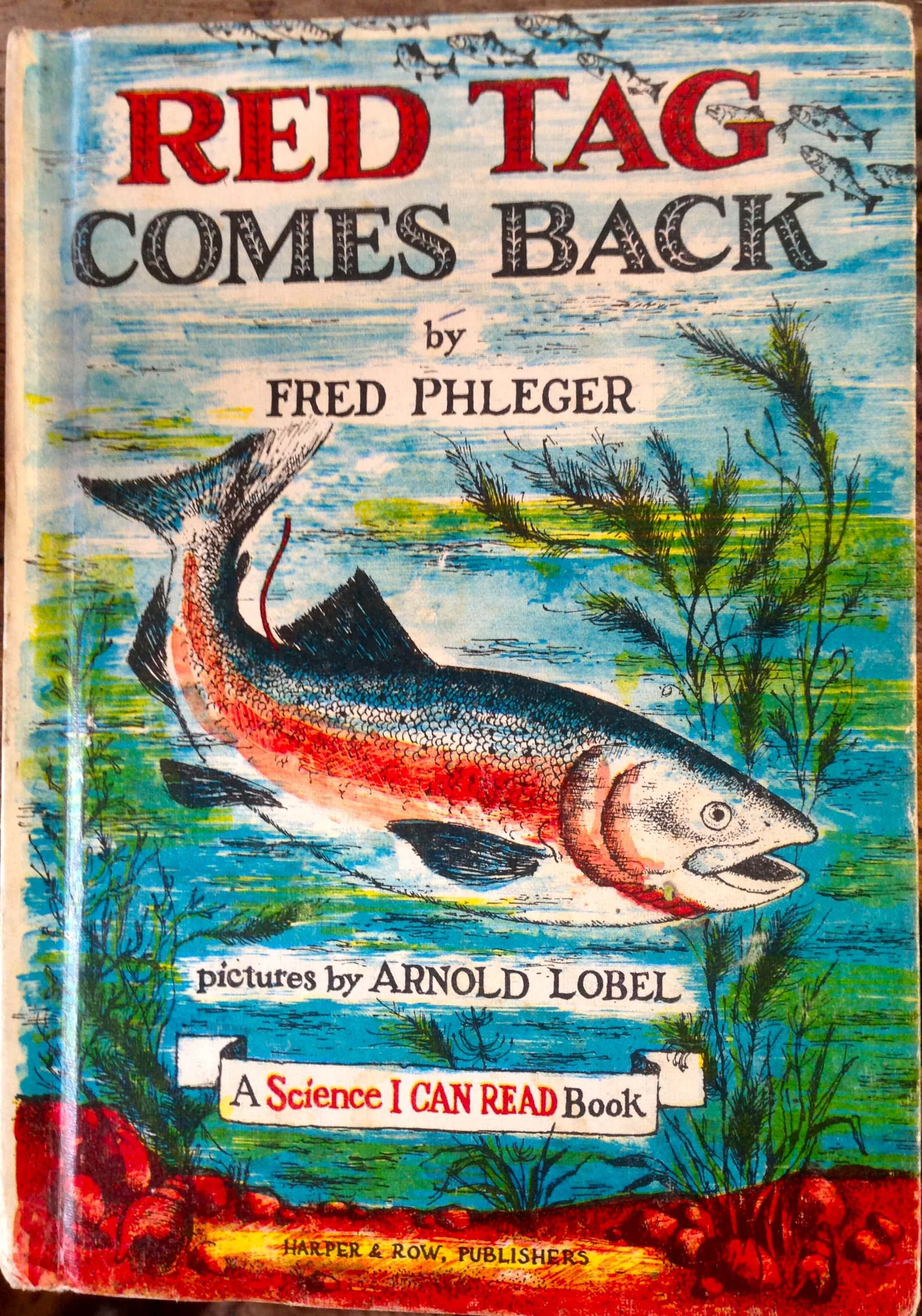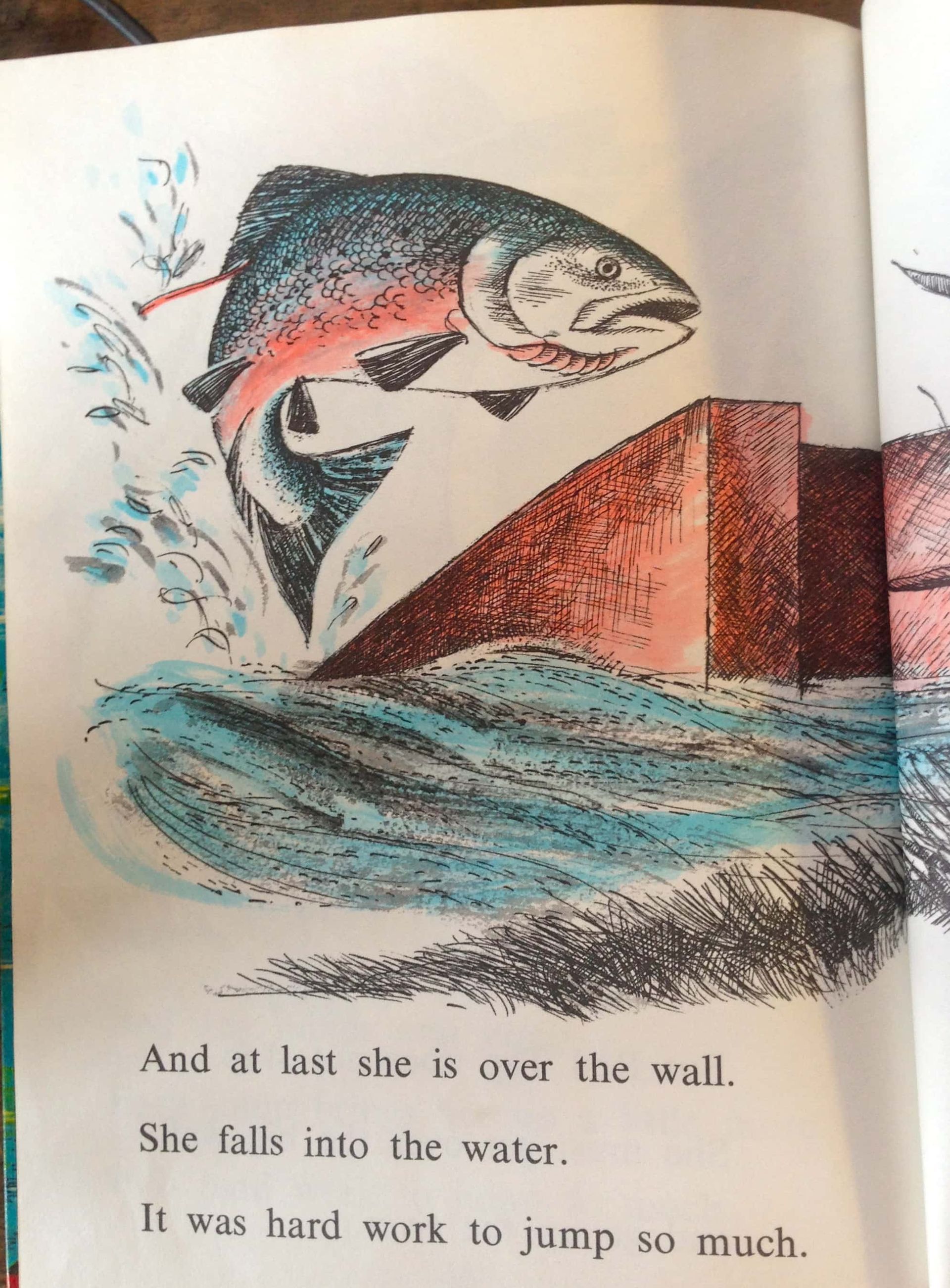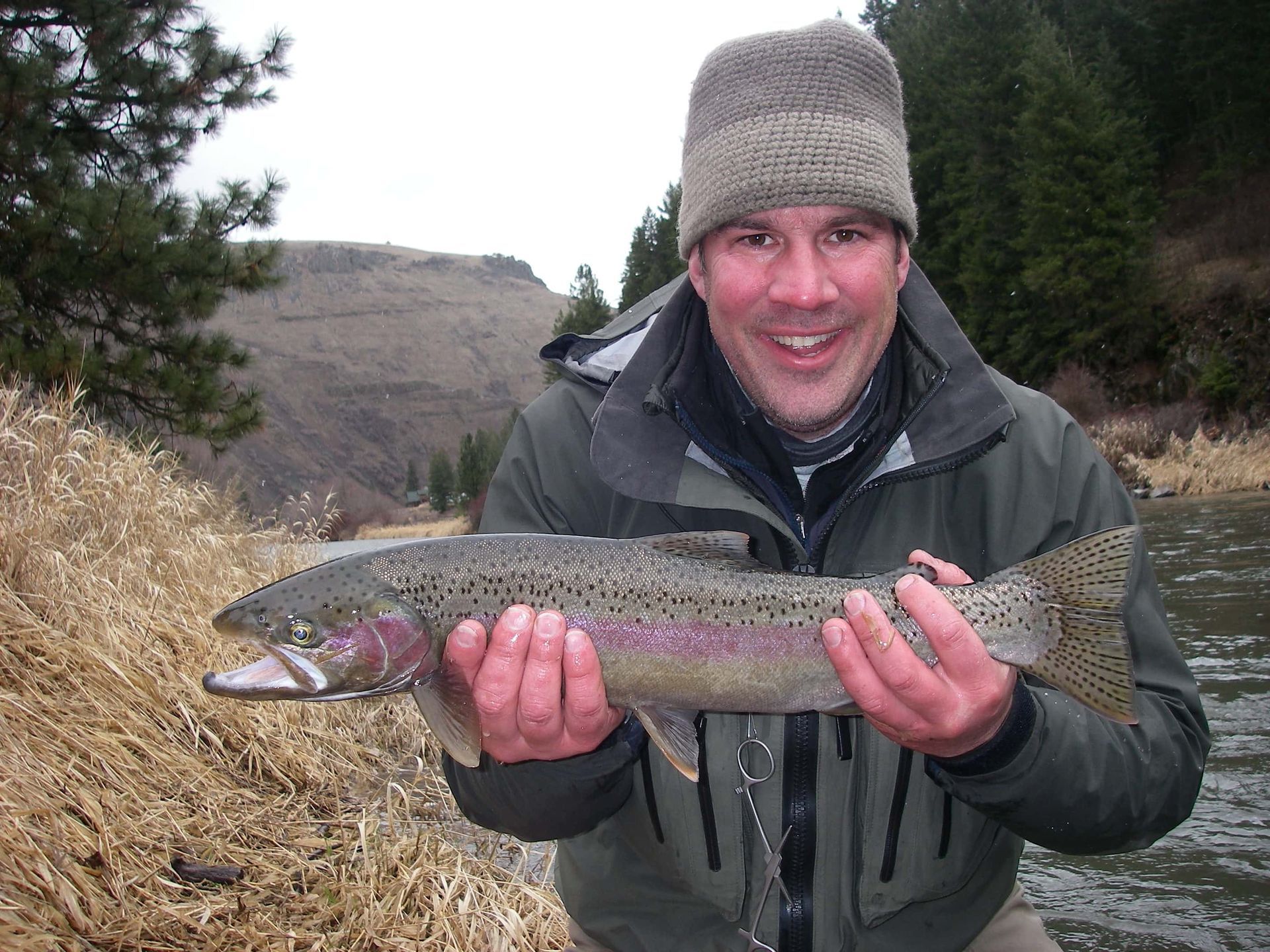The journey of 3D9.1C2DCA25C5
Worried about your smartphone GPS revealing your movements? You must be a spy then. Just imagine if we had chips implanted under our skin so when we passed scanners located at strategic spots, a database registered the date and time we passed by. That is some serious sci-fi/George Orwell crazy talk right there. And also how biologists track fish.
This here is a PIT tag. The PIT stands for Passive Integrated Transponder. The little chip thingy is placed inside a fish and the fish goes about its business.
Let’s say one of these fish is a female hatchery steelhead and you were to encounter this particular fish at a secret spot on a certain river while drifting a number 6 prince nymph with crystal flash. This is what that would look like –
Then you go home and find a PIT tag while preparing the fish for the smoker. You then contact Jeff Yanke, Wallowa District Fish Biologist for the Oregon Department of Fish & Wildlife. Jeff offers to scan the tag, a procedure that looks just like this –
And the ID comes back as 3D9.1C2DCA25C5.
Next, go to the internets and enter that string of letters and numerals. Here’s what you get back –
Now. Here’s some interesting info that Mr. Yanke was able to glean from the background of 3D9.1C2DCA25C5 . . . let’s shorten that to 3D for ease.
3D hails from the Irrigon Hatchery facility, where she had the PIT tag implanted on December 13, 2010. She was taken to the Little Sheep acclimation site in Wallowa County, got a feel for her new waters and was released on March 29, 2011.
Next time 3D shows up on the radar is on her way to the ocean, about six weeks later, at the Little Goose Dam Juvenile Fish Bypass Facility. She apparently got a lift down to the ocean, hitchhiking on a barge, probably, through the rest of the dams on the Columbia River. Because there’s no more info on 3D until 2 years and about 3 months later when she starts for home.
For more information on what 3d was up to for 2 years in the big blue, I recommend the groundbreaking scientific work of literature covering anadromous fish life cycles, titled, “Red Tag Comes Back,” a ‘Science I Can Read’ book by Fred Phleger. This was totally my favorite book as a kid and I can’t recommend it enough.
Arnold Lobel can draw him some gripping action scenes, I’ll say that much. Check it out –
So. 3D works her way upstream through the dams. And thanks to ‘Red Tag Comes Back,’ we know that jumping so much is hard work. She hangs out for a long time in one reservoir, then starts sprinting. But she misses a turn at the Snake River and goes the wrong way up the Columbia for a while, tripping the sensors at Priest Rapids Dam. Then apparently she asks for directions, because she doubles back and finds the turn up the Snake, then the Imnaha.
She went by Bonneville Dam, down low on the Columbia, August 5th of 2013 and got back into home waters of the Imnaha River February 15th of 2014. About 6 months to cover about 520 miles, not counting her detour.
Fairly amazing to be able to get this much information. Huh. This age we live in. After analyzing all that data, the important lesson is that every child should have the book ‘Red Tag.’
Other Fish
Guide Tom Farnam relied on his spidey senses and lifetime of steelhead knowledge, rather than electronics, to connect this fisherman with this wild steelhead on the Wallowa River a few days ago. Call and book your own steelhead outing with a Winding Waters guided trip. And check for PIT tags.
Wallowa River Steelhead
The post The journey of 3D9.1C2DCA25C5 appeared first on Winding Waters River Expeditions.


